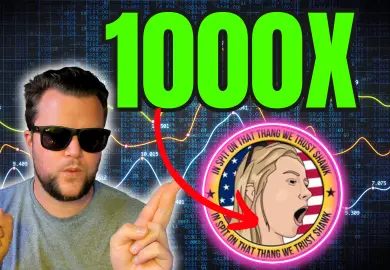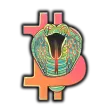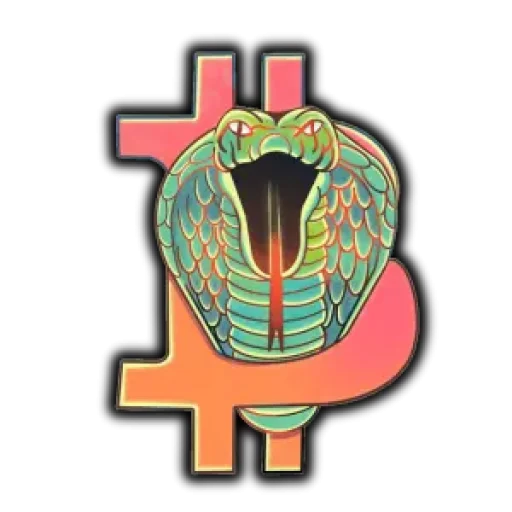The internet moves at the speed of absurdity. One moment, a blurry video surfaces; the next, a catchphrase is echoing through cyberspace, spawning merchandise, remixes, and inevitably, the siren call of cryptocurrency: the Hawk Tuah Coin.
While likely existing more as a conceptual fever dream or a fleeting scam than a legitimate project (as of late 2024), its hypothetical rise perfectly encapsulates the volatile, meme-driven frenzy that periodically engulfs the crypto world. Let’s dissect the anatomy of this phenomenon.

The Spark: “Hawk Tuah” and the Viral Lightning Bolt
It all began innocuously enough on a Nashville street in June 2024. Tim & Dee TV, known for their street interviews, asked a young woman (later identified as Hailey Welch) about her approach to romance.
Her unvarnished, Southern-accented response – “Oh, you gotta give ’em that ‘hawk tuah’ and spit on that thang! You get me?” – delivered with a mischievous grin and a hand gesture mimicking… well, spitting, ignited an inferno of virality.
“Hawk Tuah!” became the soundbite heard ’round the world. TikTok edits multiplied. Memes flourished. The phrase transcended its slightly crude origin, becoming a nonsensical badge of audacity, confidence, and unfiltered chaos. Welch, unwittingly, became an overnight folk hero. Merchandise – t-shirts, hats, even spit bottles – flooded online marketplaces almost instantly. The meme had achieved peak cultural saturation.
The Crypto Gold Rush: Where Memes Go, Tokens Follow
The trajectory from viral meme to crypto token has become a depressingly predictable pattern in the digital age. The logic, however flimsy, runs like this:
- Massive Attention: Memes like Hawk Tuah capture millions of eyeballs and generate immense online engagement.
- Built-in Community: The meme inherently creates a tribe – people “in the know” who share the joke.
- FOMO (Fear Of Missing Out): Seeing others profit wildly from previous meme coins (Dogecoin, Shiba Inu, even lesser-known ones) fuels a desperate desire to find the “next big one.”
- Ease of Token Creation: Blockchain platforms (especially those like Solana or BSC) allow anyone with minimal technical skill (or access to a token generator service) to create a new cryptocurrency in minutes.
- The Pump-and-Dream: Speculators see an opportunity to launch a token, hype it relentlessly within the meme community and crypto spaces, drive up the price rapidly (the “pump”), and then cash out (the “dump”), often leaving latecomers holding worthless digital bags.
Hawk Tuah Coin: The Hypothetical (or Scammy) Reality
While a verified, legitimate “Hawk Tuah Coin” project backed by Hailey Welch or with clear utility is highly improbable, the concept exploded almost immediately. Here’s what likely unfolded:
- The Name Squat: Within hours or days of the meme going viral, dozens, perhaps hundreds, of tokens named “Hawk Tuah,” “HawkTuah,” “SpitOnThatThang,” or variations would have been deployed on various blockchains. These are often created purely to capitalize on the name recognition.
- The Social Media Blitz: Telegram groups and Twitter/X accounts would spring up overnight. Promises of “moonshots,” “1000x gains,” and community ownership would be plastered everywhere. Images of Welch (often used without permission) would be the token’s avatar. Hype trains would leave the station at breakneck speed.
- The Liquidity Trap & Rug Pulls: Legitimate cryptocurrencies require liquidity – funds locked in a trading pool so people can buy and sell. Many meme tokens launch with minimal liquidity. Some creators might lock a small amount initially to appear legitimate. The critical danger is the rug pull: the anonymous creators suddenly drain all the liquidity from the trading pool, instantly crashing the token’s value to zero and disappearing with investors’ money. Hawk Tuah Coin, like countless other meme tokens, would be extremely vulnerable to this.
- The Lack of Utility: What would Hawk Tuah Coin do? Beyond being a speculative token trading on the meme’s popularity, the answer is almost certainly: nothing. No unique technology, no platform integration, no governance model beyond hype. Its value is purely perception-driven and ephemeral.
- The Scam Vector: Beyond rug pulls, these tokens are magnets for phishing scams, fake airdrops, and impersonator accounts trying to steal wallets or seed phrases from eager investors.
Why the Allure? Understanding the Meme Coin Psychology
Despite the overwhelming risks, people pour money into tokens like a hypothetical Hawk Tuah Coin for several reasons:
- The Get-Rich-Quick Dream: The crypto space is littered with stories of early investors turning tiny sums into life-changing wealth on meme coins. The dream is powerful, especially when amplified by social media echo chambers.
- Tribal Belonging: Buying into the token feels like joining an exclusive club centered around a shared cultural moment. It’s participatory.
- FOMO Amplified: Watching a token price graph shoot upwards in real-time creates an almost irresistible urge to jump in, fueled by influencers and community hype shouting “THIS IS IT!”
- Gambler’s Mentality: Treating it like a lottery ticket or a casino bet, where the potential (though statistically improbable) reward justifies the high risk of total loss.
- Underestimation of Risk: Many new entrants don’t understand the mechanics of DeFi, liquidity pools, or the ease with which scams are executed. They see a low price per token and think “cheap,” not “worthless.
The Inevitable Crash: Volatility as a Feature, Not a Bug
If a Hawk Tuah Coin gained any traction, its price chart would resemble a seismograph during a major earthquake. Extreme volatility is inherent to meme tokens:
- Hype-Driven Peaks: Coordinated social media pushes or celebrity mentions could cause massive, unsustainable price spikes.
- Profit-Taking Valleys: Early investors and creators (if not pulling the rug) would inevitably sell, causing sharp drops.
- Whale Manipulation: A single holder with a large amount of tokens could easily manipulate the price up or down.
- Fading Relevance: Internet memes have incredibly short lifespans. As the Hawk Tuah craze inevitably waned, so would the token’s perceived value.
- Scam Execution: The most likely outcome for any specific “Hawk Tuah Coin” would be a rug pull, where the price plummets to absolute zero instantly.
Beyond the Hype: Lessons from the Mirage
The Hawk Tuah Coin phenomenon, even as a conceptual exercise, teaches crucial lessons:
- Meme Coins are Extreme Gambles, Not Investments: Treat any money put into them as money you are fully prepared to lose. They lack fundamentals.
- DYOR is Paramount (But Hard): “Do Your Own Research” is the crypto mantra. However, researching anonymous meme token creators and unaudited contracts is often impossible. Extreme skepticism is the only rational approach.
- Beware the Rug Pull: Assume any new, hype-driven meme token is a potential rug pull until proven otherwise (which is nearly impossible upfront).
- Viral Fame ≠ Sustainable Value: A cultural moment does not translate into the technological innovation or utility required for long-term crypto value.
- Protect Your Assets: Never connect your main wallet to unknown meme coin websites. Never share seed phrases. Use a dedicated, small “gambling” wallet if you absolutely must participate.
- The Real Value Was the Meme: Hawk Tuah’s legacy is cultural – a bizarre, unforgettable moment of unfiltered internet absurdity. Trying to commodify it into a functional cryptocurrency is almost always a fool’s errand destined to evaporate faster than… well, spit on a hot sidewalk.

Conclusion: The Ephemeral Spit Take of Crypto
The Hawk Tuah Coin represents the purest, most distilled form of crypto speculation: value derived entirely from collective delusion and fleeting online hype. It’s the digital equivalent of trying to bottle lightning – or spit. While the sheer audacity of the meme itself is culturally fascinating, the tokenization of it highlights the darker, predatory underbelly of the crypto space, where viral moments become vectors for potential financial exploitation.
As the Hawk Tuah wave inevitably recedes, leaving behind a trail of meme compilations and perhaps some regretful crypto transactions, it serves as a stark reminder: in the Wild West of meme coins, the only guaranteed outcome is volatility, and the most likely sound isn’t “Hawk Tuah,” but the deafening silence of a rug pull, leaving investors holding nothing but digital dust. The real treasure, as always, was the absurdity of the meme itself, not the illusory coins it briefly inspired.

